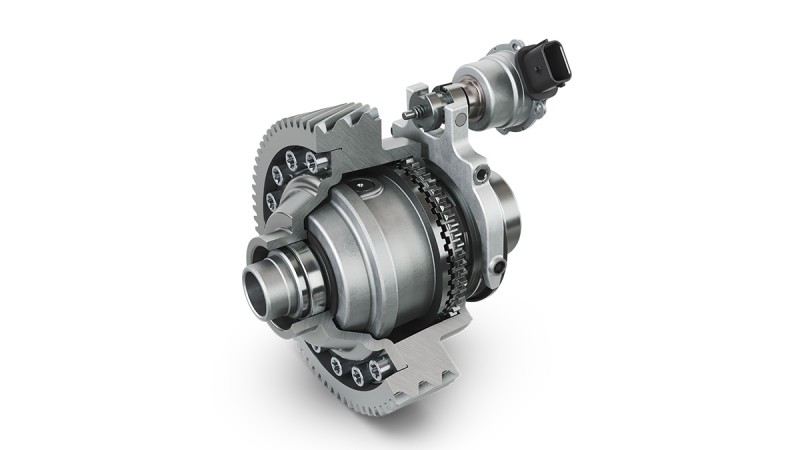Differential Integrated Disconnect Unit
Integrating a Disconnect Unit (DCU) into the differential of an all-wheel drive electric vehicle increases system efficiency. When the secondary e-axle is not needed, it is disconnected from the driveline. This reduces electrical and mechanical losses caused by the idle e-axle. The use of a DCU is particularly beneficial in systems where the e-axle functions as a secondary drive, such as in hybrid architectures or pure electric all-wheel drive concepts. Seamless disconnection increases energy efficiency without compromising traction.

Highlights
- Highest performance and efficiency increase when decoupled at the differential
- Average power consumption: <2 W for a normally stay system with BLDC motor
- Modular approach
Advantages
- Reduced energy consumption of up to 7 % allows for a down-sizing of the battery
- No change of transmission gear set needed by using a differential integrated DCU
- Ball ramp mechanism to improve shifting performance and locking functionality
- Spring spindle mechanism to solve tip-on-tip condition
- Flexible electro-mechanical actuation with smart/non-smart variants
- No bevel gear rotation when decoupled – lower drag losses, improved NVH
